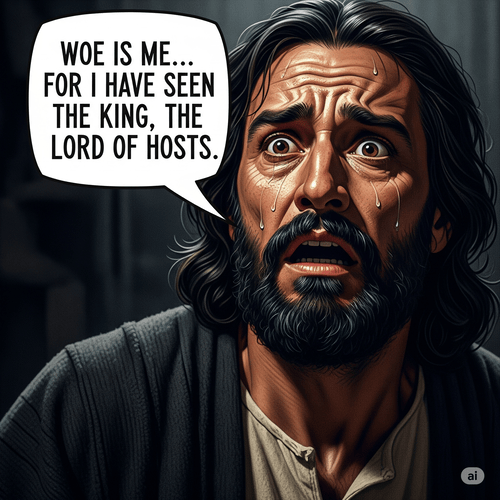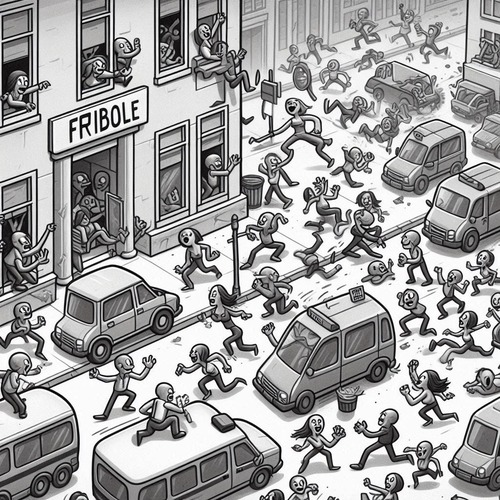The Mandelbrot Set: Surprising Evidence for Intelligent Design
In the realm of mathematical mysteries, few discoveries capture the imagination quite like the Mandelbrot Set does. Named after mathematician Benoit Mandelbrot, this intricate mathematical construct is more than just a collection of numbers—it’s a window into a profound complexity that challenges our understanding of randomness and design.
At first glance, the Mandelbrot Set appears deceptively simple. Generated through a straightforward mathematical equation, it unfolds into an infinitely complex landscape of breathtaking beauty. But beneath its surface is a challenge to purely materialistic worldviews—a mathematical structure so elegant, so intricate, that it whispers of something more than blind chance.
Mathematical Foundations
The Mandelbrot Set emerges from a seemingly mundane equation: z = z² + c. When plotted on a complex plane, this simple recursive formula generates images of indescribable complexity. Each point within the set represents a mathematical journey—some points spiral into infinity, while others remain bounded, creating intricate patterns that repeat at every scale.
What makes this mathematical object truly remarkable is its infinite complexity. Zoom into any portion of the Mandelbrot Set, and you’ll discover entire worlds of detail. Microscopic regions reveal patterns identical to the whole, a property known as self-similarity. Mathematically, it’s a fractal—a structure where complexity emerges from simplicity, where infinite variation springs from a single, elegant rule.
Interlude: Beyond the Fibonacci—A New Mathematical Revelation
Where the Fibonacci Sequence (Read Our Post: reveals divine design through its elegant appearance in natural growth patterns—from spiral arrangements in sunflowers to the branching of trees—the Mandelbrot Set represents a more abstract manifestation of potential divine intelligence. While the Fibonacci shows God’s mathematical signature in biological expansion, the Mandelbrot demonstrates a deeper principle: the emergence of infinite complexity from profound simplicity. Both mathematical structures suggest an underlying intelligent design, but where the Fibonacci hints at organic growth, the Mandelbrot points to the very architecture of possibility itself—a meta-mathematical landscape that suggests reality is less about random occurrence and more about elegant, intentional framework.
Aesthetic and Philosophical Dimensions
The beauty of the Mandelbrot Set transcends pure mathematics. Its patterns mirror structures found throughout nature—the branching of trees, the formation of coastlines, the intricate designs of snowflakes. This resonance between mathematical abstraction and natural form suggests something profound: that underlying our seemingly chaotic universe are fundamental principles of order and design.
Consider the set’s visual complexity. Despite emerging from a simple equation, it produces images that rival the most intricate artistic creations. Each exploration reveals new landscapes of colour and form, each more stunning than the last. This suggests complexity isn’t always a product of random processes, but can emerge from elegant, intentional systems.
Scientific and Philosophical Challenges to Atheistic Materialism
The Mandelbrot Set poses significant challenges to purely materialistic explanations of reality. How can such profound complexity emerge from such a simple mathematical rule? The set demonstrates that information and complexity can be inherent in fundamental mathematical principles—suggesting the universe is more than just a collection of random particles.
Several key observations challenge atheistic assumptions:
- Emergence of Complexity: The set shows how intricate patterns can emerge from simple rules. This challenges the notion that complexity must always be the result of gradual, undirected processes.
- Information Density: Each point in the Mandelbrot Set contains potentially infinite information. This suggests that information might be a fundamental property of reality, not merely a by-product of physical interactions.
- Aesthetic Elegance: The unexpected beauty of mathematical structures implies a deeper order. Why should mathematical principles be beautiful if the universe is merely a product of blind chance?
Prominent scientists have noted this mathematical mystique. Mathematician Gregory Chaitin has argued mathematical complexity reveals something profound about the nature of information and design. The Mandelbrot Set doesn’t prove God’s existence—but it certainly challenges the idea that the universe is a meaningless, random construct.
The Mandelbrot Set as a Metaphor
Beyond its mathematical significance, the Mandelbrot Set serves as a powerful metaphor for understanding complexity. It demonstrates how intricate systems can emerge from simple, fundamental principles—much like how complex life might emerge from fundamental cosmic laws.
The set reveals a universe governed not by chaos, but by elegant, sophisticated rules. Each exploration uncovers new layers of beauty, suggesting that reality is far more nuanced than our limited human perspectives can comprehend.
Conclusion
The Mandelbrot Set is more than a mathematical curiosity. It’s a testament to the profound mystery underlying our reality. Sure, it doesn’t definitively prove the existence of a divine creator. However, it challenges reductive materialistic worldviews and points to a universe far more sophisticated than random chance can explain.
In the delicate lines and infinite complexity of this mathematical marvel, we glimpse something extraordinary—a hint of an underlying intelligence, a suggestion that beauty and order might be fundamental to the fabric of existence.
Perhaps the Mandelbrot Set isn’t just a mathematical construct, but a whisper from the mind of something—or someone—far beyond our current understanding.
The Mandelbrot Set—Related FAQs
What exactly is the Mandelbrot Set? The Mandelbrot Set is a mathematical set of points in the complex plane, the boundary of which forms a detailed, infinitely complex fractal. Generated by a simple recursive equation (z = z² + c), it produces images of extraordinary complexity when plotted graphically. Unlike many mathematical constructs, the Mandelbrot Set can be visually explored, revealing intricate patterns that repeat at every scale of magnification, making it a unique and fascinating mathematical object.
How does the Mandelbrot Set relate to spirituality? The Mandelbrot Set challenges purely materialistic worldviews by demonstrating how profound complexity can emerge from simple mathematical rules. Its infinite detail, unexpected beauty, and the way it mirrors natural structures suggest a deeper underlying order to reality. For many thinkers, this mathematical construct hints at the possibility of intentional design, suggesting that the universe might be more than a random collection of particles.
Can anyone explore the Mandelbrot Set? Modern technology has made exploring the Mandelbrot Set accessible to anyone with a computer. Numerous free software tools and online platforms allow users to zoom into the set, revealing its infinite complexity. Mathematicians, artists, and enthusiasts can use specialised fractal exploration software to generate images, zoom into microscopic regions, and discover the set’s stunning visual patterns.
Is the Mandelbrot Set actually important in science? The Mandelbrot Set is critically important across multiple scientific disciplines. In mathematics, it represents a breakthrough in understanding complex dynamics and fractal geometry. In physics, it provides insights into chaos theory and complex systems. Biologists use similar principles to model natural growth patterns, while computer scientists apply fractal principles to compression algorithms, network design, and computational modelling.
How did the Mandelbrot Set come to be discovered? Benoit Mandelbrot was a groundbreaking Polish-French-American mathematician who revolutionised our understanding of roughness and complexity in nature. Working at IBM in the 1970s and 1980s, he coined the term “fractal” and developed fractal geometry as a new branch of mathematical study. His work bridged multiple disciplines, showing how mathematical principles could explain seemingly random phenomena in nature, from the shapes of coastlines to the behaviour of financial markets.
The Mandelbrot Set emerged from a remarkable collaboration of mathematical genius. Benoit Mandelbrot, a Polish-born mathematician working at IBM in 1980, built upon decades of previous mathematical research, particularly the work of mathematicians Gaston Julia and Pierre Fatou from the early 20th century. While Julia and Fatou had laid theoretical groundwork exploring complex dynamics, it was Mandelbrot who first used computer graphics to visualise these mathematical phenomena, revealing the set’s breathtaking complexity. His breakthrough came through IBM’s powerful computational resources, which allowed him to generate and explore these intricate mathematical landscapes that had previously been impossible to fully visualise.
The Mandelbrot Set—Our Related Posts
Editor’s Pick

Why Do Some Respond to God’s Call While Others Don’t?
THE REFORMED VIEW ON OUTWARD AND INWARD CALLS EXPLAINED Picture this: Two neighbours attend the same church service. They hear [...]

Does Ocean Salt Content Prove a Young Earth?
A COMPELLING LOOK AT MARINE CHEMISTRY AND EARTH’S TIMELINE The Salt Question That Challenges Deep Time: If Earth’s oceans have [...]
Noah’s Flood: Where Did All the Water Come From? And Go?
The question hits every Bible-believing Christian at some point: “If Noah’s flood covered the whole earth, where did all that [...]

No Marriage in Heaven? What Does Mark 12:25 Mean?
“Will I see my spouse in heaven? Will we still be married?” These questions pierce the heart of every Christian [...]

The Terror of Meeting God: What Isaiah 6 Reveals About Divine Holiness
WHEN ‘WOE IS ME’ IS THE ONLY PROPER RESPONSE TO A GLIMPSE OF GOD Picture this: You’re a prophet of [...]

Is the Holy Spirit Present in Unbelievers? The Biblical Answer
Can someone who doesn’t believe in Jesus Christ have the Holy Spirit living inside them? This question strikes at the [...]

The Gap Theory Exposed: Why Embrace a Young Earth?
The Gap Theory proposes there’s a vast time gap—millions or billions of years—between Genesis 1:1 (“In the beginning God created [...]

Rethinking Sickle Cell Anaemia: A Case for Intelligent Design
Sickle cell anaemia presents what many consider evolution’s strongest card—a genetic condition that causes suffering yet provides protection against malaria. [...]

‘Bad’ Design: Flaw in Nature Or Flaw in Our Perspective?
When the Eiffel Tower was first proposed, critics called it a monstrous eyesore that would ruin Paris forever. Today, it’s [...]

The Problem of Divine Absence: How Do Believers Cope?
WHEN GOD SEEMS FAR: THE GREAT DISCONNECT Ever wondered why God seemed so close to Joseph in his Egyptian prison, [...]






